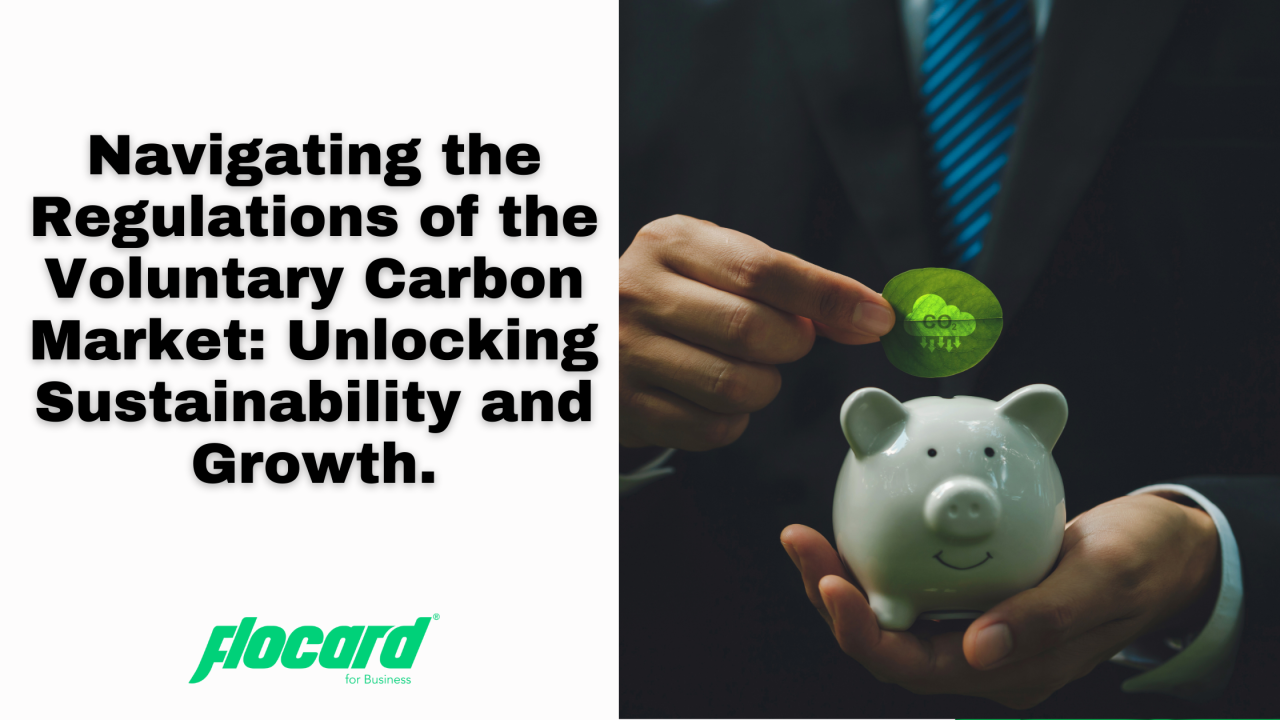Understanding Regulation in the Voluntary Carbon Market

Regulating the Green: Unpacking the Voluntary Carbon Market's Framework
The voluntary carbon market is a marketplace where carbon credits can be bought and sold to offset emissions. This blog focuses on the various legal systems that govern it, including established norms, project creators, certifying organizations, vendors, and purchasers, as well as technical developments like AI and blockchain. We will emphasize the importance of having an organized and clear regulatory environment to foster confidence and informed decision-making.
The industry allows people, companies, and other entities to voluntarily buy carbon offsets or credits to counterbalance their greenhouse gas emissions. Unlike compliance markets, which are mandated by international agreements or government directives, participation in the VCMI is voluntary. This proactive step helps reduce carbon footprints and supports initiatives to combat climate change, promoting sustainable energy, reforestation, and carbon-reduction programs towards global climate targets.
Understanding the Voluntary Carbon Market
Imagine you are a business owner or someone passionate about reducing your carbon footprint. The VCM allows you to purchase carbon , with one credit equivalent to one metric ton of greenhouse gas emission reduction. These credits are generated by environmentally beneficial projects such as reforestation, renewable energy, and landfill methane capture. Buying these credits is akin to compensating for your emissions elsewhere.
Importance of Regulations in Ensuring Transparency, Credibility, and Effectiveness within the VCM
Regulations are vital for the VCM's effectiveness, legitimacy, and transparency. Without robust regulatory frameworks, there's a risk of "greenwashing," where offsets may be misrepresented as beneficial without adhering to strict standards. Regulations help define standards for the verification, validation, and oversight of carbon offset projects, ensuring accurate emission reduction measurement and accounting. They also deter malpractices like double counting and fraud, thereby maintaining market integrity. Effective regulations can enhance market liquidity and encourage growth by building confidence among participants.
Players in the Voluntary Carbon Market
-
Buyers: Individuals or businesses purchasing carbon credits to demonstrate environmental consciousness or reduce emissions.
-
Project Managers: Innovators who design projects that absorb carbon or reduce emissions through methods like reforestation or renewable energy.
-
Certifiers: Act as the "carbon police," verifying project legitimacy and ensuring carbon credits meet established standards.
-
Trading Platforms and Brokers: Serve as intermediaries between buyers and sellers, ensuring fair treatment for all parties.
As the VCM evolves, projects and organizations are crucial in establishing norms, maintaining credibility, and promoting transparency. Let's examine the current state of regulation.
Efforts and Establishments
-
Voluntary Standards: Projects must adhere to these standards to be eligible for carbon credits. Examples include the Verified Carbon Standard (VCS), Climate Action Reserve (CAR), and Gold Standard . These guidelines ensure environmental safety and genuine emission reduction or elimination.
-
Certification Bodies: Independent organizations tasked with ensuring carbon offset projects meet specific criteria. They conduct audits and evaluations to ensure projects qualify for providing carbon credits. Examples include Bureau Veritas, SustainCERT, and the Rainforest Alliance .
-
Industry Associations:Organizations that bring together carbon market participants to share information, promote best practices, and address common issues. Examples include the International Emissions Trading Association (IETA).
Pros and Cons of Current Regulatory Frameworks Pros:
Pros:
-
Credibility:Established standards and certification organizations enhance the VCM's credibility by ensuring carbon credits reflect real emissions reductions.
-
Transparency:Mandated detailed documentation and reporting increase transparency, offering stakeholders confidence in the authenticity of carbon credits.
-
Innovation:Regulatory frameworks encourage the development of new methods and technologies to address emerging challenges in carbon accounting.
Cons:
-
Fragmentation:The proliferation of voluntary standards and certification organizations can make the market confusing and difficult to navigate for buyers and sellers.
-
Cost and Complexity:Compliance with regulatory standards can be costly and challenging, potentially limiting participation in the VCM.
A Comparative Analysis of Voluntary Standards
-
Gold Standard: Focuses on projects that offer sustainable development benefits beyond emissions reduction, emphasizing environmental integrity, social co-benefits, and community involvement.
-
Verified Carbon Standard (VCS): Sets rigorous criteria for project eligibility, reporting, monitoring, and verification, covering a broad range of project types.
-
Climate Action Reserve (CAR): Specializes in North American projects, particularly in forestry, livestock, and landfill methane, offering a platform for carbon credit registration and issuance.
Unification of Standards and Improved Transparency
Efforts are underway to synchronize standards and enhance transparency through clear reporting, verification, and stakeholder involvement. New technologies like blockchain are being explored to boost traceability and security within the VCM.
Conclusion
The voluntary carbon market is essential for climate action, but challenges must be addressed to ensure its legitimacy and effectiveness. Participants in the VCM must work together to harmonize standards, enhance transparency, and strengthen enforcement to fully realize its potential as a key tool in global efforts to combat climate change.
Join Flocard in our quest for a greener future. Let's advocate for uniform standards, improved transparency, and clearer regulations. Together, we can ensure the validity and efficiency of carbon offset programs, acting now to combat climate change and promote sustainability.
